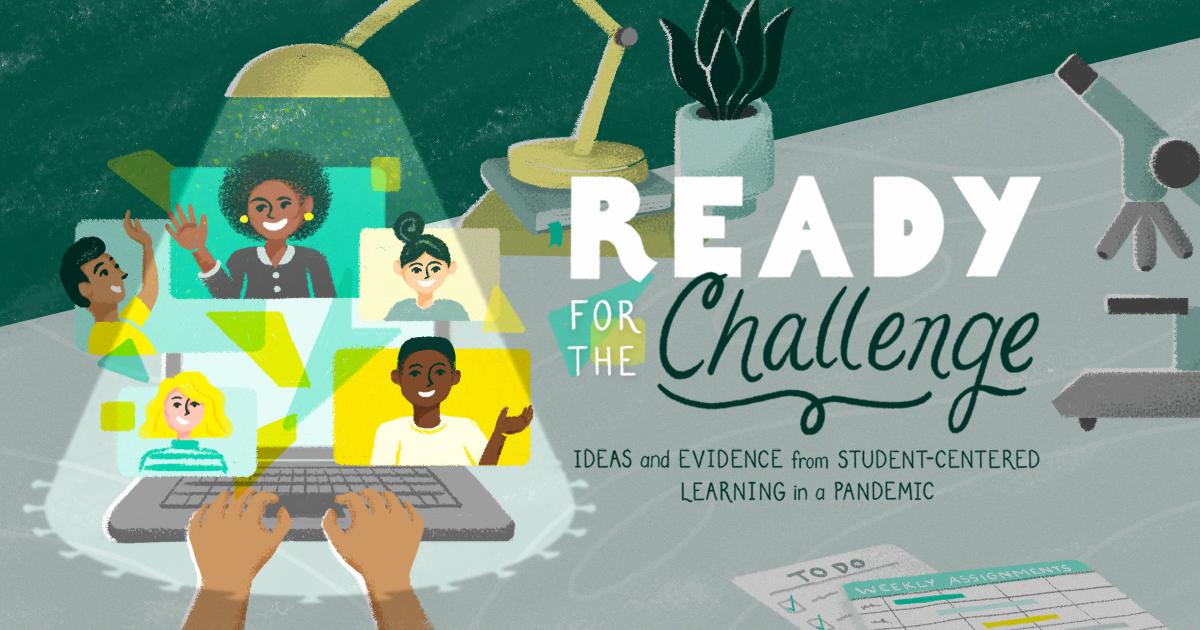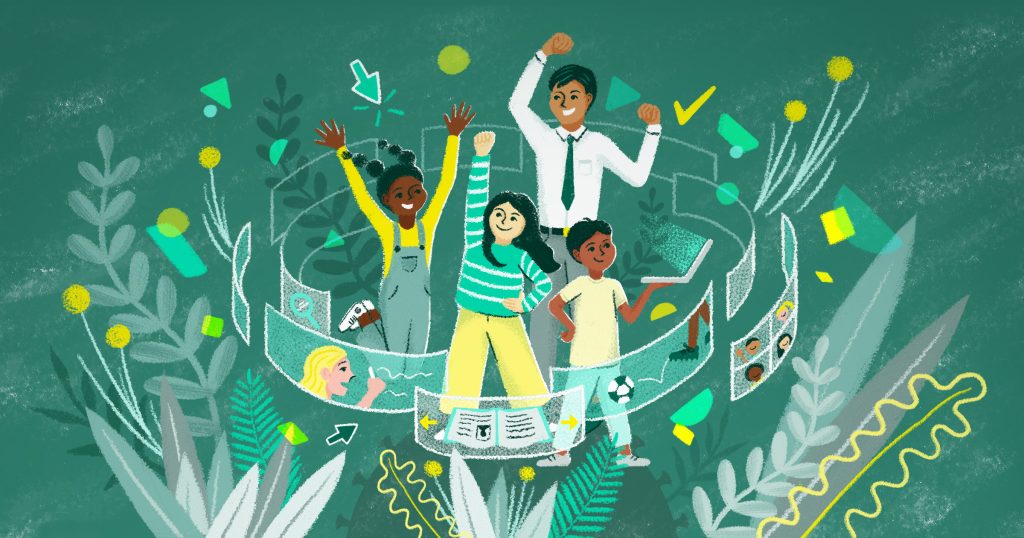This is the final, concluding post in a year-long blog series looking at strategies student-centered schools have used in the pandemic.
In the kick off post, we asked: were student-centered schools more ready for the challenge of Covid-19? Over the last 10 months—through case studies and analysis—we found that to be true.
Our follow-up question was: “Why?” Schools cited a series of student-centered strategies. These included both pedagogical practices, as well as indicators and evidence they use to gauge their success. We review those below.
But this post also explores a deeper truth we discovered: while specific strategies were important, more fundamentally student-centered schools were prepared because educators embraced a culture of quickly and continually adapting.
In short, a truly student-centered education looks different from school-to-school, from student-to-student, and even from day-to-day. Student-centered schools are those built to accommodate that reality.
Why were they prepared? Some key student-centered strategies they use.

The schools we spoke with described using a few key common practices, both before and during the pandemic. The most common were:
- They checked-in regularly with each student. Whether multiple times a day or every other week, each student had regular touchpoints with a caring adult. Such “advisors” documented and communicated academic and social/emotional learning needs with other adults who could help support them.
- They fostered learning at students’ own pace. Schools adopted competency-based approaches to learning and grading that encouraged mastery on an individualized (and where needed, flexible) timeline.
- They nurtured the whole student. Schools developed systems to ensure that students’ basic needs (food, healthcare, housing) were monitored and addressed.
- They leveraged student passions and interests. Student input drove the design of projects and learning experiences, encouraging their engagement and ownership.
- They reimagined the schedule to be flexible by design. While sometimes students participated in courses as part of a more standard course/hour schedule, in other cases, they managed their own time per their in-the-moment learning needs.
This series also sought to understand the success indicators and evidence-gathering strategies schools were using to know how they were doing. Some key characteristics were:
- They integrated diverse data sources to inform decision-making. Educators developed mechanisms to link data about students’ interests, learning progress, and social-emotional needs. When the right software wasn’t available, they created their own tools (for example, using Google Sheets).
- They attended to “lead” measures, not just “lag” ones. Educators acknowledged that data from academic assessments was often too little, too late to address barriers to learning. “Lead” measures—like attendance and Zoom participation as proxies for engagement—were flagged early to drive intervention.
- They valued qualitative evidence alongside traditional measures. Student reflections, stories of impact, portfolios of work, and survey responses provided rich evidence of student growth at a time when test scores alone failed to adequately capture it.

When “learning practices” and “success indicators” are deeply intertwined

In our initial research questions for this series, we conceptualized learning practices and success indicators as distinct. In practice, we found that they were often intertwined, even inseparable.
Take, for example, the regular check-ins with students described above. They commonly yielded data on learning progress and needs, which educators logged in a shared spreadsheet or student database. Relevant staff members could then respond in real time to support students’ particular needs.
Is this a learning practice or a way to gauge success? Or both? In student-centered schools, the two are often melded together, enabling in-the-moment adaptation for individual students.
The deeper key ingredient: a school-wide culture of adaptation
It wasn’t just approaches used with specific students that were adapted on short notice. Over the last 18 months, student-centered schools were continually adjusting their core school-wide designs and practices.
For example, many of the systems we described above for logging and responding to student needs were created in real-time, in response to student needs. They weren’t dreamed up in a strategic planning session years before, or adopted after formal resolution of a school board.
Rather, they emerged from a culture where change is seen not as a source of fear, but a source of opportunity. Educators had the capacity and support to change and adapt. While they certainly had constraints—such as state and district requirements—they found ways to work within them.
Foundational to this culture is a high level of trust among colleagues and students, the sense that “we’re in this together.” We’re going to adapt. It’s going to be hard. But it’s what we need to do.

New circumstances reveal an old truth
It’s tempting to conclude: the agile, adaptive, responsiveness exhibited by student-centered schools was crucial in this present time of Covid.
But the reality is, to equitably serve all students—during times of broader world turbulence and times of relative stability—our system has always needed to be and will always need to be more agile, adaptive, and responsive.
Covid-19 merely made the need for a student-centered future unmistakably apparent.

About This Series
This blog post is part of a larger series exploring the practices and success indicators used for student-centered learning in a pandemic—and beyond. We are grateful to the Leon Lowenstein Foundation for their generous support for this series.
Read More & See Other Posts
